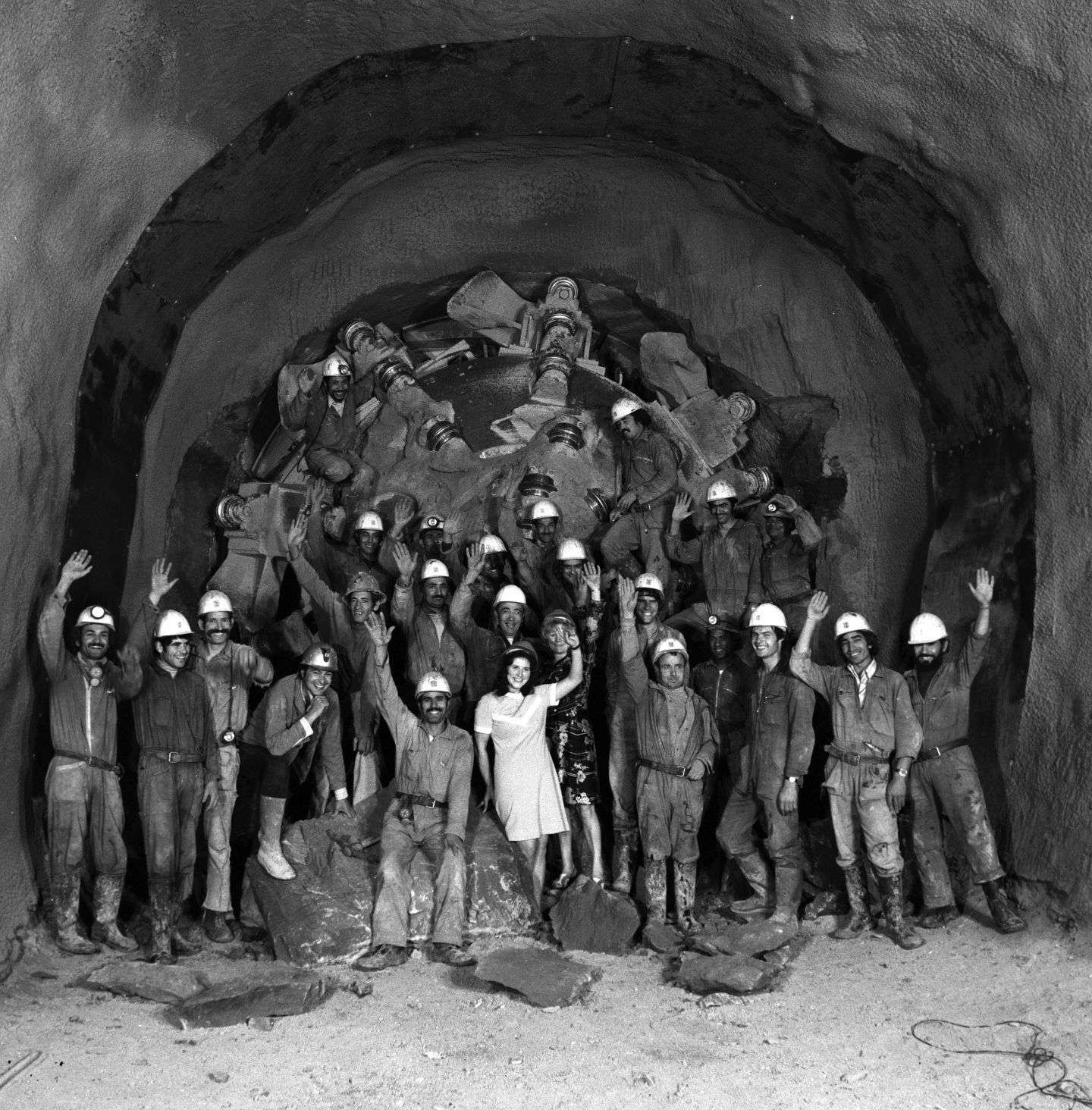History
The beginning of CERN
Starting in 1950, UNESCO organised several major conferences, during which the creation of a large nuclear physics laboratory was discussed. In December 1951, the first resolution to found a European Nuclear Research Council was adopted. The provisional council set up a few weeks later drew up the Convention for the establishment of the future Laboratory. However, none of the collaborating states were keen to have the laboratory on their soil... In June 1953, a popular referendum in the canton of Geneva resulted in favor of establishing CERN there, and the Convention was finally approved on 1 July 1953 in Paris.
The 300 GeV project
At the end of the 1960s, an accelerator using combined function magnets and with a 7.5 km circumference was proposed. The CERN site was far too small for this project, so all the member states proposed a new site for this machine. The diplomatic tug-of-war that ensued, delayed the project for a good two years... During this time, John Adams and his team created a simplified design, using separate function magnets, which was so much cheaper that it allowed for the machine to be constructed underground. The project was approved in February 1971, and construction started in 1972. On 31 July 1974, the Robbins tunnel boring machine completed the circuit. Concrete lining of the finished tunnel sections had been going on in parallel, and equipment installation and commissioning followed quickly. The first beam was injected on 17 June 1976, and the 400 GeV (yes, the 300 GeV project was upgraded to 400 GeV already before switching on!) design energy was reached already in October.

-Karel Cornelis
The first experiments
From late 1976 the SPS started delivering proton beams to fixed-target experiments in the North and West Areas. The North Area took beams of 400 and later 450 GeV, both fast- and resonant slow extracted, while the West Area received beams of 200 to 240 GeV for facilities like the Big European Bubble Chamber (BEBC) and the Omega spectrometer.

The SppS
The idea of using the SPS as a collider, running protons and antiprotons in the same vacuum chamber but in opposite directions, was presented already before the construction of the machine completed in 1976. Simon van der Meer had already proven in 1974 that his stochastic cooling principle could produce beams of a high enough quality. Excavation of the ECX4 and ECX5 caverns was started in 1979. By the summer of 1981, installation of the UA1 experiment was completed in ECX5, and likewise for UA2 in ECX4.

The new collider experiments quickly started producing data, and already on the 20 January 1983, Carlo Rubbia could present the discovery of the W boson. Three months later, on 30 April 1983, the first conclusive proof of the Z boson was captured, in form of an electron-positron pair resulting from the decay of the Z0 particle. These two findings earned him the Nobel Prize in Physics the next year, together with Simon van der Meer for his stochastic cooling. The SppS remained in the spotlight until 1989, when the commissioning of electron- and positron beams started, preparing for the LEP era.

The LEP era
With the commissioning of the Large Electron-Positron Collider in July 1989, the SPS got a new role as an injector, sending electrons and positrons to LEP at an energy of 20 GeV. When not producing these beams for LEP, the SPS was still sending 400-450 GeV proton beams to fixed-target experiments in the North and West Areas. When planning for the CNGS experiment and the LHC started towards the end of the '90s, beams for these had to be prepared in the SPS. The proton beam required by CNGS had the highest intensity of all beams accelerated in the SPS to date, while the LHC wanted a high number of bunches with small spacing and high uniformity; both required new ground to be broken for the SPS.
LHC run 1 and 2
On 10 September 2008, the first beam from the SPS made a successful loop of the LHC. The physics program was later postponed due to a massive quench incident, but from 20 November 2009, SPS operations were dedicated to sending beam to the LHC, resulting in a successful Run 1, which culminated with the discovery of the Higgs boson in July 2012.
When the LHC went into its first Long Shutdown in February 2013, the SPS was also shut down for 17 months, until 27 June 2014, to receive some important upgrades. All cables in LSS1 were replaced, 18 kV distribution renewed, a small batch of dipole magnets had their vacuum chambers coated, and the TT10 tunnel was structurally reinforced.
During both runs of the LHC, the SPS was also still providing beams to experiments in the North- and West Areas, such as Compass, Shine, NA62, and HiRadMat. Towards the end of run 2, the AWAKE experiment, located in the decommissioned and partially refurbished CNGS tunnel, also received high-energy beams from the SPS.
LIU and beyond
The next Long Shutdown took place from 10 December 2018 until 12 April 2021, and was focused on preparing the SPS for higher intensity beams, as part of the LHC Injectors Upgrade (LIU) project. The RF system was upgraded with new cavities, power amplifiers, and low-level control system; a new external beam dump was built in LSS5, removing the internal dump from LSS1; access and fire safety systems were renewed, and a further 250 vacuum chambers were coated with amorphous carbon to reduce electron cloud issues.


